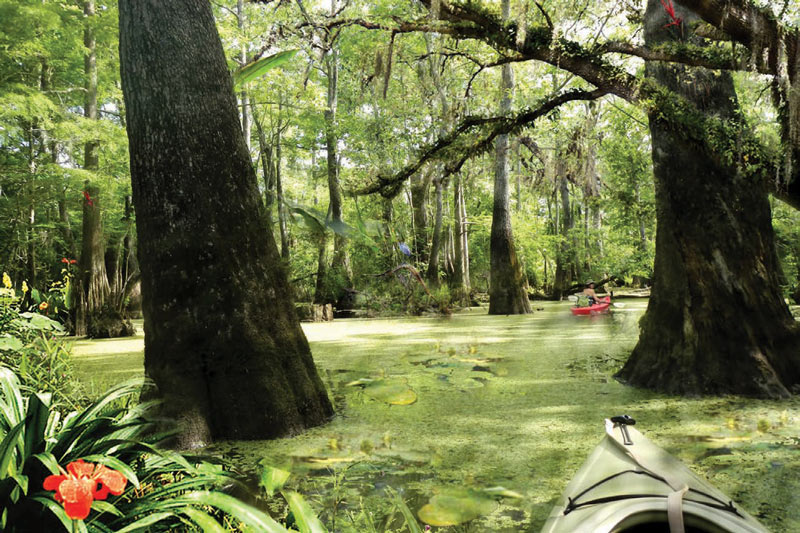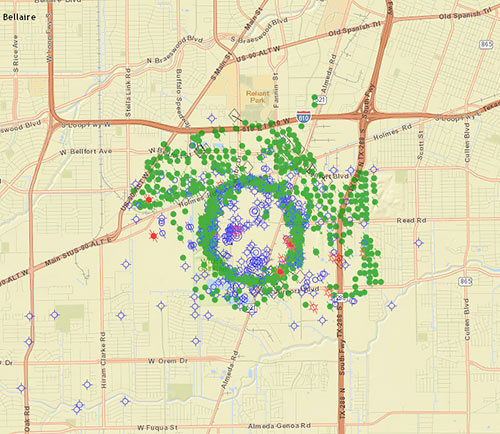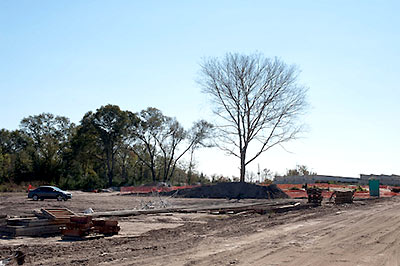
Bright and shiny renderings from the recently-released master plan for the Houston Botanic Garden show that design firm West 8 is aware of the challenges involved in straddling a world-class park across Sims Bayou, on the site of Glenbrook Park Golf Course just across I-45 north of Hobby Airport. The Dutch firm, known internationally for unusual bridges and unconventional landscape design, has planned for many of the Garden’s displays to flood at will; the shores of Sims Bayou on the Garden’s property will also be resculpted. And to combat Houston’s just-shy-of-year-round heat, shade trees would be preserved or planted throughout the park, including the towering cypresses depicted in the bayou-side wetland gardens shown above (parts of which will be explorable by kayak).
Meanwhile, the more formal garden spaces planned for the park are shown with their own built-in shade (complete with custom ceiling fans): Colonnade structures (like the ones picture below) will ring each of the major collection gardens, which are designed to be “entered, enjoyed, and contemplated from the comfort of the shaded perimeterâ€:




